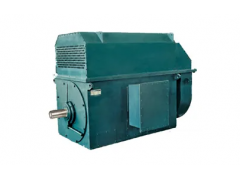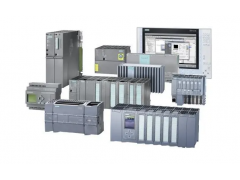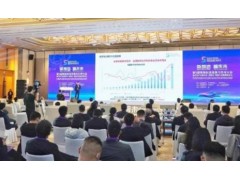Since this year, the production and sales of domestic electric vehicles have shown a high growth trend, directly driving the further development of the lithium-ion battery industry. According to the data of Power Battery Application Branch of China Chemical and Physical Power Supply Industry Association, the installed capacity of power battery in China's market in the first three quarters of this year was about 200.38GWH. With the power battery becoming hot again this year, the price of lithium carbonate has soared from about 280000 yuan per ton at the beginning of the year to 560000 yuan, an increase of more than 100%.
On the one hand, the demand for lithium batteries is extremely strong, and on the other hand, the cost of batteries is rising, which also leads to the domestic mainstream power batteries and materials, new energy vehicles and other enterprises have increased their layout in the lithium resource end.
Lithium battery is surging. However, the following question perplexes the industry: will the influx of large amounts of capital lead to overcapacity? Is there such a large market demand? What is the focus of current power battery innovation? How to solve the recycling problem after the "retirement" of power batteries? At the "2022 China (Suining) International Lithium Battery Industry Conference and International Exchange Conference on New Energy Vehicles and Power Batteries" held recently, the experts at the meeting discussed the above issues.
The inflection point of "lithium price" is not reached due to high demand
According to the data of China Association of Automobile Manufacturers, the production and sales of new energy vehicles in China reached a new high in October, reaching 762000 and 714000 respectively, with year-on-year growth of 87.6% and 81.7% respectively, and the market share reached 28.5%.
The production and sales of new energy vehicles continued to rise, driving the capacity expansion of the power battery industry. In September, Xinwangda released two production expansion announcements. It plans to invest and build a power battery production base project in Yichang City with a planned capacity of 30GWh and a total investment of 12 billion yuan in conjunction with Dongfeng Group and Dongfeng Hongtai; At the same time, it is planned to launch a new energy power battery production base project in Yiwu, with a total investment of about 21.3 billion yuan and a total capacity of about 50GWh. In the same month, Ningde Times announced that it planned to build a new production base in Yibin District, Luoyang City, Henan Province, with a total investment of no more than 14 billion yuan
More and more enterprises have begun to "encircle the land", but the rapid expansion of production capacity has also caused people to worry about overcapacity: is there really such a large market demand?
Zhou Bo, the general manager of the Research Center of Power Battery Application Branch of China Chemical and Physical Power Supply Industry Association, said that orders for global energy storage began to increase, and the track started to grow rapidly for a long time. It is expected that the global demand for energy storage batteries will reach 80GWh in 2022, with a year-on-year growth of 82%. The global demand for energy storage batteries will reach 200GWh in 2025. It is comprehensively predicted that the global lithium battery demand will reach 680GWh in 2022 and 1178GWh in 2025.
A person in charge of an enterprise said in an interview with a reporter, "At present, the demand for lithium batteries will continue to grow, and the high price of lithium products will not see a turning point for the time being. In the next few years, the tight supply and demand of lithium batteries is likely to be the normal development of the industry."
Deepen coordination and integration and improve risk resistance
"China has become a veritable country of smelting, processing and consumption, and has been the largest lithium salt producer in the world for many years." Zhu Jingbing, vice president of China Nonferrous metals Industry Association, introduced that in 2021, China's lithium salt production and consumption will account for 70% and 73% of the global total respectively, which strongly supports the development of the new energy industry. A group of key enterprises in the industry have carried out in-depth international cooperation to develop lithium resources in Australia, Chile and other countries, with an investment amount of more than 60 billion yuan, which has greatly improved the resource guarantee capacity of China's lithium battery industry chain and supply chain. The domestic resource development and utilization capacity has been continuously improved, the industrial technology level has made remarkable progress, and the industrial development is thriving. At present, the development of lithium battery industry has become an accelerator to promote energy reform and achieve the dual carbon goal in China.
How to continuously promote the development of lithium battery industry? Zhu Jingbing gave suggestions: First, strengthen resource guarantee and optimize resource supply. Restricted by poor domestic lithium resource endowment and poor economy, China's dependence on foreign lithium raw materials remains high, reaching 65% in 2021. Therefore, it is necessary to clarify the strategic bottom line of domestic resource self-sufficiency guarantee, strengthen domestic resource exploration and development, strengthen prospecting breakthrough strategy, strengthen resource reserves, promote comprehensive, economical and intensive recycling of resources, and strengthen overseas resource guarantee capability.
The second is to deepen the lithium battery industry chain, cooperate and integrate, and create a high-quality win-win development system. In 2021, the sales volume of new energy vehicles and the shipment volume of power batteries in China will both increase by about 160% year on year, and the output growth of positive materials will nearly double year on year, while the lithium salt supply chain at the raw material end will only increase by 53% year on year. The demand growth at the downstream of the industrial chain is significantly faster than that at the upstream. Periodic supply and demand mismatch led to a significant increase in the price of lithium salt. Therefore, it is necessary to strengthen the coordination and integration of the whole lithium battery industry chain, adhere to chain supplement, extension, optimization and strengthening, and strive to create a high-quality win-win development system to ensure the healthy and long-term development of the lithium battery industry.
Third, strengthen the crisis awareness and improve the ability to withstand risks. A hundred years of change superimposed on the world epidemic situation, economic and social development is facing more uncertainty and instability, and risk challenges are further increasing, which will bring more disturbance and impact to the healthy development of the industry. Enterprises throughout the industry chain should keep sober minded, strengthen crisis awareness, improve their ability to withstand risks, and avoid major risks while seizing development opportunities.
Diaz also revealed that the Chilean government is planning to establish a new system to regulate and rectify lithium mining in the country, promote the sustainable development of the lithium industry, allow technology transfer, and make it an environment-friendly industry. In addition to resource development, Chile will also focus on developing lithium technologies and industries, such as lithium batteries.
Continuous efforts from technology to application in the collaborative research of production and learning
While new energy vehicles drive the reform of power sources and the rapid development of lithium-ion power batteries, they also face new requirements and challenges. "The key to solving problems is to make efforts from the technical end to the application end." Sun Shigang, an academician of the CAS Member and a professor of Xiamen University, said that lithium-ion batteries are currently facing serious constraints on resources such as lithium, energy density approaching theoretical limits, frequent safety accidents, limited use environment and other challenges. To meet these challenges, we need to solve the key scientific problems from the four levels of material, interface, transmission and system.
"It is hoped that industry and university will cooperate to tackle key problems, solve key scientific problems, and break through technological bottlenecks, so that China can break through technological bottlenecks as soon as possible in the fierce international competition and promote industrial development." Sun Shigang said.
Many enterprises have carried out relevant research on the above issues. Zhang Hui, deputy general manager of Shenzhen ZTE New Materials Technology Co., Ltd., introduced that in recent years, the company has carried out diaphragm development work around power battery safety, endurance mileage, lightweight and low cost. "At present, the company is increasing the research and development of the five in one technology to achieve cost reduction."
Dr. Xia Baojia, the technical consultant of Ruipu Lanjun Energy Co., Ltd., introduced that the technology of preparing high nickel materials, mixing multi single crystals and mixing with lithium manganese iron phosphate developed by Ruipu Lanjun can effectively improve the battery safety.
Shenzhen Yinghe Technology Co., Ltd., a professional supplier of lithium battery equipment, is also seeking technological breakthroughs. Xu Yi, president of the company, revealed that Yinghe Technology actively explored the "smart" upgrading of equipment, introduced real-time detection systems and minimalist assembly lines, and established a simulation laboratory to help rapid technological innovation. In terms of management, digital management system and professional team are introduced to provide customer-centric service and solve problems quickly.
Relieve the shortage of raw material supply and recover the market availability
Lithium resources are in short supply. Accelerating the recovery of power batteries has also become one of the important ways to alleviate the shortage of raw materials, attracting many enterprises. According to Tianyan's data, there are more than 70000 enterprises related to power battery recycling in China. From January 2022 to the end of September 2022, there will be more than 31000 new registrations.
Zhang Yongxiang, chairman and senior engineer of Shenzhen Taili Waste Battery Recycling Technology Co., Ltd., said that the rapid growth of production and sales of new energy vehicles has led to a surge in demand for power batteries. According to the service life of power batteries for private cars of 5-9 years and the service life of operating vehicles such as taxis and online car hailing of 2-5 years, the power battery industry will usher in a peak growth period of scrapping. In addition, at present, the global lithium metal reserves are 16 million tons, equivalent to about 85 million tons of lithium carbonate. based on the global lithium resource output of 235400 tons in 2017 (a year-on-year increase of 21.5%), the static service life is 361 years; Assuming that the compound annual growth rate of lithium carbonate production in the future is 20%, the global lithium resources can be used for 54 years. Therefore, whether from the perspective of environmental protection or resource utilization, recycling of waste batteries is an inevitable choice.
To realize the recycling of waste batteries, technology is a "barrier" that must be passed. It is understood that the relatively mature and recognized recycling technology routes in the industry are physical method, wet method and pyro method. Zhao Xiaoyong, chairman of Beijing Saidemi Resources Reuse Research Institute Co., Ltd., introduced that the hydrometallurgical process has a high maturity and high purity of precious metals, which can well realize "where precious metals come from". However, due to its high comprehensive production cost, poor environmental adaptability and other reasons, it has certain development limitations. The physical recovery process has the advantages of strong environmental adaptability, unrestricted site selection, and low comprehensive recovery operation cost. However, there are still batch differences of repair materials and degraded applications that need to be further improved.
"It can be said that hydrometallurgy and physical method have their own advantages and indispensability. In the future, they will complement each other's advantages and go hand in hand, and they will fully realize the maximization of recovery benefits and application scenarios through cooperation." Zhao Xiaoyong said.
"At present, power battery recycling is a" wind outlet ", but to achieve long-term and sound development, the industry needs not only to improve the technical level, but also to improve market regulations and standards as soon as possible, and guide the orderly and standardized development of the industry." The person in charge of the enterprise told the reporter.





